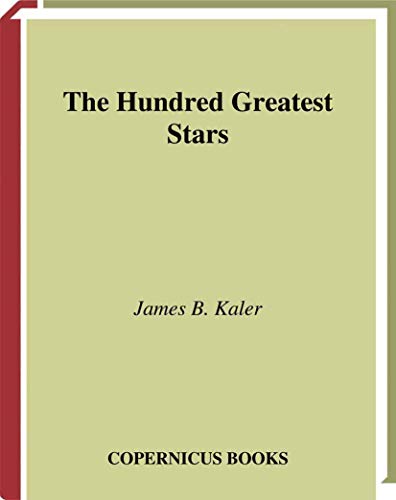The Hundred Greatest Stars
Kaler, James B.
About the Book
Description:
Dispatched, from the UK, within 48 hours of ordering. This book is in good condition but will show signs of previous ownership. Please expect some creasing to the spine and/or minor damage to the cover. Seller Inventory # CHL9533102
About this title:
Synopsis: While there are guides to the visible sky, this is the first book to encompass the most important stars known in the universe at a level accessible to the layperson. The noted astronomer James Kaler takes us on a tour of the 100 most interesting stars, describing their characteristics and importance in words and vivid pictures. James B. Kaler is an internationally recognized expert on stars and their formation. A professor of astronomy at the University of Illinois, he is the author of "Stars and Their Spectra" (Cambridge), "Stars" (Freeman/Scientific American Library), "Cosmic Clouds" (Freeman/Scientific American Library), and numerous articles for popular and professional astronomy magazines.
From the Inside Flap: When we look into the night sky, thousands of stars twinkle back at us. We see cool red stars, hot blue stars, big stars and small stars. We find young stars and old stars, single stars and doubles. Some are astonishingly bright, while others hardly shine at all. Consider some examples from this book:
- Rapid rotators like the Black Widow, which spins 640 times per second, and speedsters like Barnard's Star, which clips along at 90 kilometers per second.
- Dazzling stars like Canopus, which shines 14,800 times more brightly than the Sun, and black holes like Cygnus X-1, with gravity so strong that no light at all escapes it.
- White dwarfs like EG 129, which has a magnetic field over a billion times stronger than Earth's.
- Young stars like T Tauri, just forming and accreting mass, and older stars like Eta Carinae that have exploded and are ejecting mass back into the Universe.
- Tiny neutron stars like Geminga, just 30 kilometers across, and enormous stars like VV Cephei, which is nearly as large as the entire orbit of Saturn.
The variety is astounding, even a bit overwhelming. How can the nascent stargazer begin to understand all the cosmos has to offer? In THE HUNDRED GREATEST STARS, James B. Kaler paints intimate portraits of the 100 stars he likes best. With an infectious enthusiasm, Kaler tells us about his favorites and, in the process, shows us how each star fits into the development and evolution of the cosmos.
Bibliographic Details
Title: The Hundred Greatest Stars
Publisher: Copernicus
Publication Date: 2002
Binding: Hardcover
Condition: Used; Good
